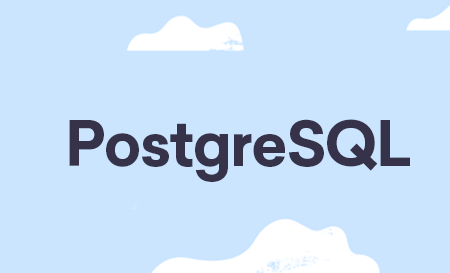Description
Introduction of Cosmos DB with .NET for Integration
Cosmos DB with .NET for Integration course focuses on how to integrate Azure Cosmos DB with .NET applications for seamless data management and storage. Participants will learn how to use Cosmos DB with the .NET SDK to develop high-performance, scalable, and reliable applications. The course covers essential concepts such as Cosmos DB’s API options, data modeling, querying techniques, and best practices for integrating Cosmos DB into .NET-based applications.
Prerequisites
- Basic Knowledge of .NET Framework: Familiarity with .NET Core and C#.
- Understanding of Azure Cloud: Experience with Azure services, especially Cosmos DB, is beneficial.
- Fundamentals of NoSQL Databases: Understanding the basics of NoSQL concepts.
- Experience with RESTful APIs and JSON: Basic knowledge of handling REST APIs and JSON data format.
Table of Contents
1. Introduction to Cosmos DB with .NET
1.1. What is Cosmos DB and Why Integrate It with .NET?
1.2. Overview of Cosmos DB APIs: SQL, MongoDB, Cassandra, Table, Gremlin
1.3. Benefits of Using Cosmos DB in .NET Applications
1.4. Understanding Cosmos DB’s Global Distribution and Consistency
2. Setting Up Cosmos DB with .NET
2.1. Creating a Cosmos DB Account on Azure
2.2. Configuring Connection Strings for Cosmos DB in .NET
2.3. Installing the Cosmos DB SDK for .NET
2.4. Setting Up a Basic .NET Core Application with Cosmos DB
3. Data Modeling and Best Practices in Cosmos DB
3.1. Understanding Document vs. Table Models
3.2. Designing Scalable Data Models for Cosmos DB(Ref: Cosmos DB for Data Engineers: Design and Querying Best Practices)
3.3. Choosing the Right Partition Key for .NET Applications
3.4. Data Consistency Considerations in Cosmos DB
4. Cosmos DB CRUD Operations with .NET
4.1. Creating Documents in Cosmos DB with .NET SDK
4.2. Reading and Querying Cosmos DB Data with LINQ and SQL-like Queries
4.3. Updating and Deleting Documents in Cosmos DB
4.4. Handling Cosmos DB Exceptions and Errors in .NET
5. Querying Cosmos DB in .NET Applications
5.1. Writing SQL Queries in Cosmos DB using .NET SDK
5.2. Optimizing Queries with Indexing and Partitioning
5.3. Advanced Querying: Joins, Aggregates, and Filters in .NET
5.4. Pagination and Continuation Tokens in Cosmos DB Queries
6. Performance and Scaling Cosmos DB in .NET
6.1. Managing Throughput and Request Units (RUs) in .NET
6.2. Scaling Cosmos DB for High-Traffic Applications
6.3. Optimizing Cosmos DB Performance with Indexing Policies
6.4. Using Cosmos DB’s Autoscale and Provisioned Throughput
7. Security Best Practices for Cosmos DB with .NET
7.1. Implementing Role-Based Access Control (RBAC) for Cosmos DB
7.2. Securing Cosmos DB Data with Encryption and Authentication
7.3. Using Cosmos DB’s Private Endpoint and VNET Integration in .NET
7.4. Managing API Keys and Access Tokens in .NET Applications
8. Integrating Cosmos DB with .NET-Based Microservices
8.1. Using Cosmos DB in Microservices Architecture with .NET
8.2. Event-Driven Architectures and Cosmos DB Integration
8.3. Using Cosmos DB with Azure Functions and Azure Logic Apps
8.4. Implementing Eventual Consistency in Distributed .NET Applications
9. Troubleshooting Cosmos DB Integration with .NET
9.1. Diagnosing Performance Issues in Cosmos DB
9.2. Troubleshooting Common Errors with Cosmos DB SDK for .NET
9.3. Using Diagnostic Logs for Cosmos DB
9.4. Managing Data Inconsistencies and Conflict Resolution
10. Real-World Use Cases for Cosmos DB in .NET Applications
10.1. Building Scalable Web Applications with Cosmos DB
10.2. Implementing Real-Time Analytics with Cosmos DB in .NET
10.3. Integrating Cosmos DB with .NET for IoT Data Management
10.4. Using Cosmos DB in Multi-Region and Multi-Tenant .NET Applications
11. Conclusion
11.1. Recap of Key Integration Strategies for Cosmos DB with .NET
11.2. Advanced Cosmos DB Features for .NET Developers
11.3. Next Steps: Leveraging Cosmos DB for Large-Scale Applications
11.4. Future Trends in Cosmos DB and .NET Development
Conclusion
Upon completion of this course, participants will be equipped with the necessary skills to effectively integrate Azure Cosmos DB with .NET applications. They will gain hands-on experience in performing CRUD operations, optimizing queries, ensuring security, and scaling their Cosmos DB deployments to handle high-traffic applications. With this knowledge, developers can build scalable, secure, and high-performance applications on Azure using Cosmos DB as the backend data store.







Reviews
There are no reviews yet.